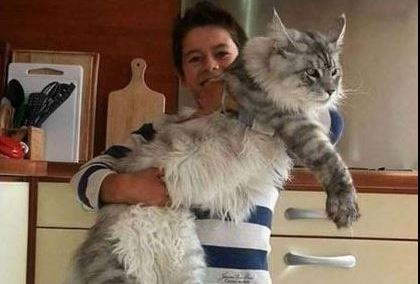Shedding is a normal event in every norwegian forest cats for sale life and cat owners should accept this fact. Through shedding cats replenish their fur and maintain it in a good condition.
Wild cats shed their fur twice a year – in the spring to remove the winter undercoat, and in the autumn to prepare their new coat for the coming winter. Domesticated cats, however, are subjected to artificial winter heating and summer air-conditioning. As a result, their bodies are confused and they shed constantly.
When cats shed they remove dead hair from their bodies. Dead hair should be removed because it may cause skin irritation.
Shedding indicated that the cat is healthy; sick cats do not shed. Shedding depends on the time the cat spends outdoors. It is significantly affected by daylight and can be triggered by a number of hours spent on sunlight. Shedding also depends on the bathing, grooming of the cat and the activities she is involved in.
Cats that live indoors shed at any time of the year. The amount of the shed hair is less than the amount shed by outdoor cats because of the artificial light and the temperature in the house.
Outdoor cats shed two times in the year – in the spring and in the autumn. They usually don’t shed at all or shed just limited amounts of hair in the winter because they keep their fur for the cold weather.
Breeds that don’t shed or shed a little
There are two cat breeds that shed minimal amounts of hair. One of them is the Cornish Rex that has short curly hair, and the other one is the Devon Rex that has similar coat. Their shedding is usually not noticed, but it doesn’t mean they don’t shed.
The only cat breed that doesn’t shed is the Sphynx. However, these cats are not absolutely hairless. Some people describe the skin of the Sphynx as suede or chamois. This cat breed is very rare and requires special care but is a perfect choice for people with allergies.
Dealing with your cat’s shedding
You can control the shedding of your cat with regular brushing and combing. Daily brushing removes loose and dead hair and maintains the cat’s hair healthy.
Start brushing your cat slowly and don’t continue the sessions too long; stop brushing the cat before she protests. You can use treat to make the brushing sessions more pleasant. As the cat learns to like the brushing you can make these procedures for longer period of times. They will remove dead hair from the cat’s body and the cat is less likely to shed in the house.
When combing the cat, do it carefully in the hair growth direction, so that you smooth the coat and remove any knows or tangles in the fur. Longhaired cats should first be brushed with a wide tooth comb and then with a fine tooth comb.
The length of the cat’s hair is very important for the good brushing. Short-haired cats, such as Siamese, Burmese and Cornish rex cats, need little brushing. Shorthaired with dense coats like American shorthairs, British shorthairs and Scottish folds need a brushing once a month. Cats with long and flowing coats like Persian cat have to be combed very often and should be bathed once in the week or once in two weeks.



